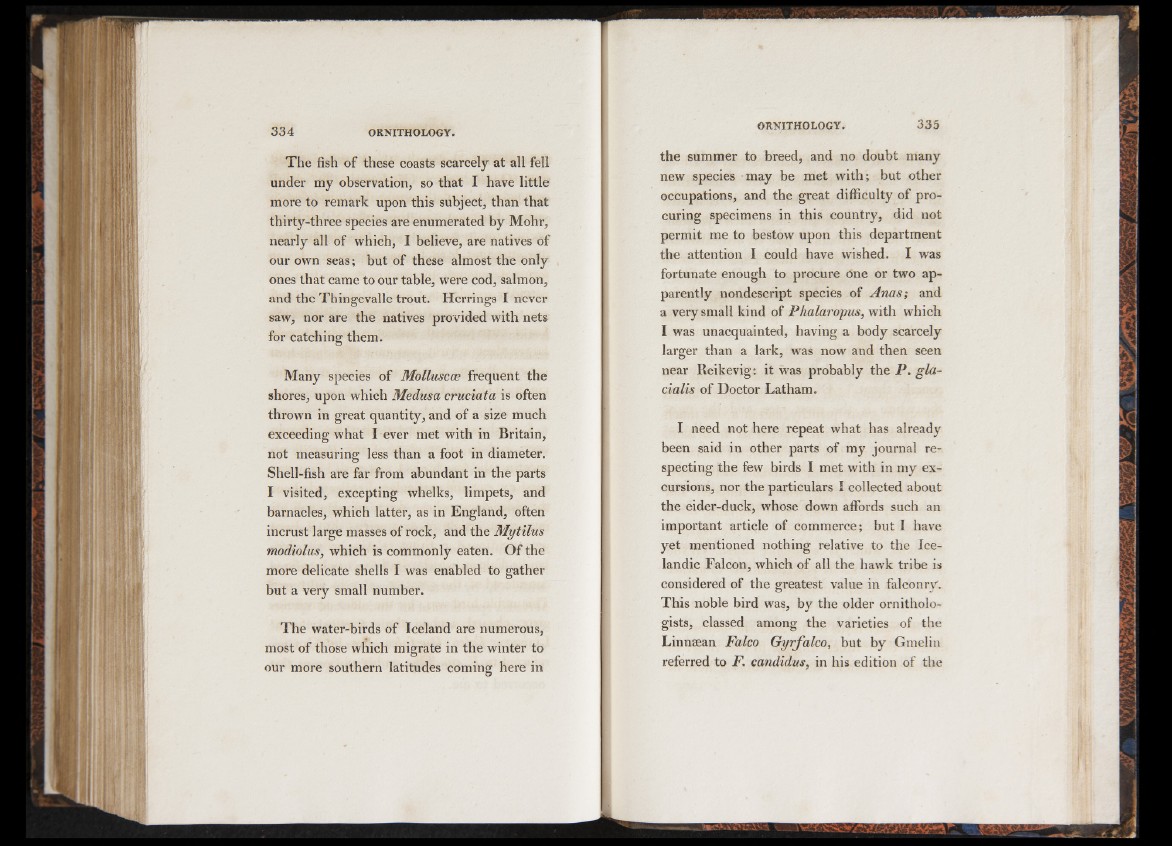
The fish of these coasts scarcely at all fell
under my observation, so that I have little
more to remark upon this subject, than that
thirty-three species are enumerated by Mohr,
nearly all of which, I believe, are natives of
our own seas; but of these almost the only
ones that came to our table, were cod, salmon,
and the Thingevalle trout. Herrings I never
saw, nor are the natives provided with nets
for catching them.
Many species of Molluscce frequent the
shores, upon which Medusa crucmta is often
thrown in great quantity, and of a size much
exceeding what l ever met with in Britain,
not measuring less than a foot in diameter.
Shell-fish are far from abundant in the parts
I visited, excepting whelks, limpets, and
barnacles, which latter, as in England, often
incrust large masses of rock, and the Mytilus
modiolus, which is commonly eaten. Of the
more delicate shells I was enabled to gather
but a very small number.
The water-birds of Iceland are numerous,
most of those which migrate in the winter to
our more southern latitudes coming here in
the summer to breed, and no doubt many
new species may be met with; but other
occupations, and the great difficulty of procuring
specimens in this country, did not
permit me to bestow upon this department
the attention I could have wished. I was
fortunate enough to procure One or two apparently
nondescript species of Anas; and
a very small kind of Phalaropus, with which
I was unacquainted, having a body scarcely
larger than a lark, was now and then seen
near Reikevig: it was probably the P. gla-
cialis of Doctor Latham.
I need not here repeat what has already
been said in other parts of my journal respecting
the few birds I met with in my excursions,
nor the particulars I collected about
the eider-duck, whose down affords such an
important article of commerce; but I have
yet mentioned nothing relative to the Icelandic
Falcon, which of all the hawk tribe is
considered of the greatest value in falconry.
This noble bird was, bv the older ornitholo-
gists, classed among the varieties of the
Linnaean Falco Gyrfalco, but by Gmelin
referred to F. candidus, in his edition of the